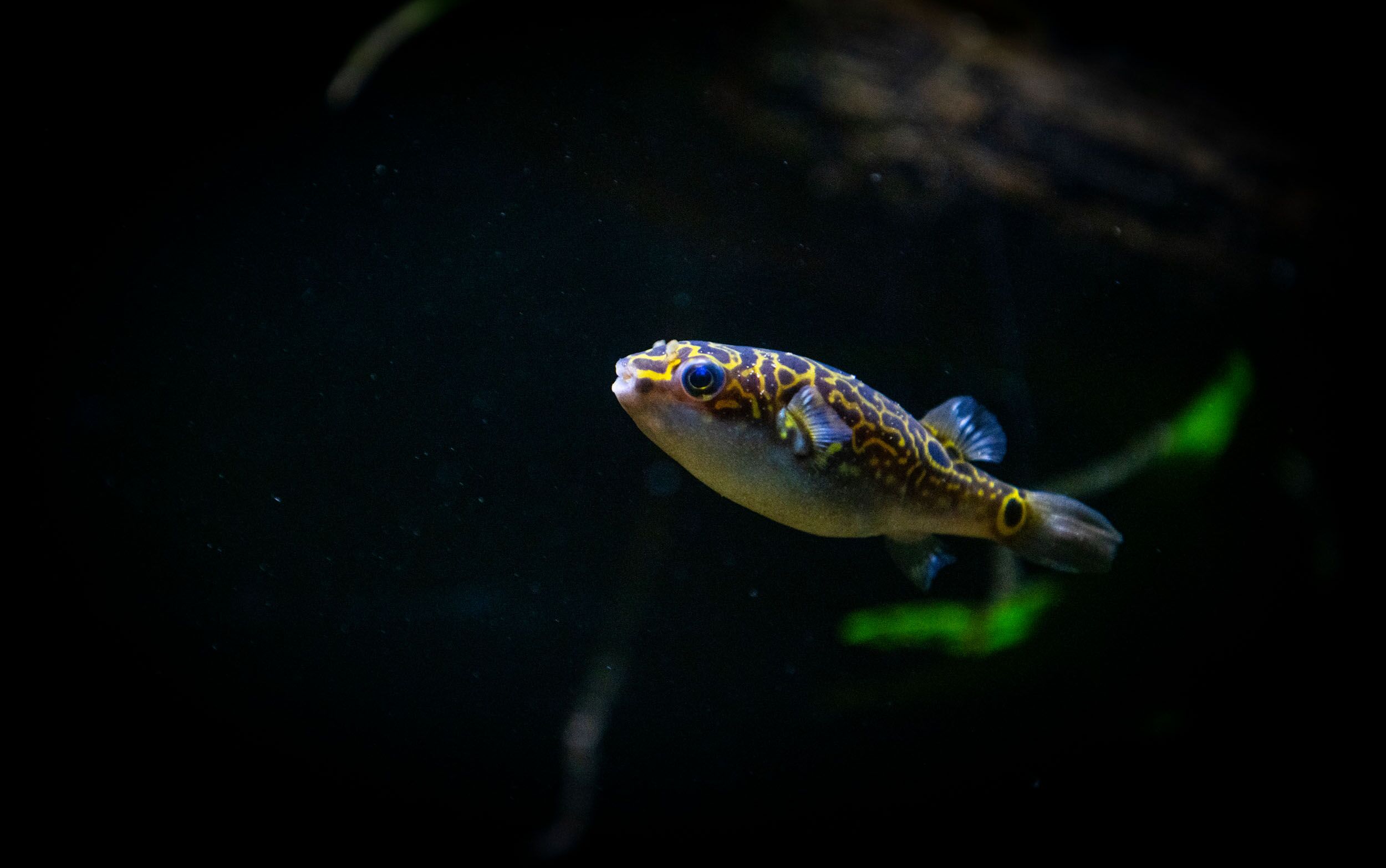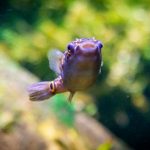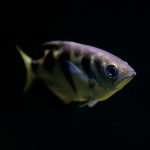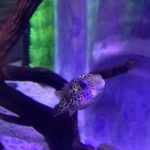
These tanks show off some small but complex fish who have adapted to survive in a variety of water types.
Our Brackish exhibit shows off some small but complex fish who have adapted to survive in a variety of water types. This unique space can help you to understand just how marine life in brackish waters works, and what makes it so different to the usual marine environments you’re probably more familiar with.
So, what exactly are brackish waters and what animals live in them? You’ll find out more when you come to visit us, but for now, here’s a little taste to get started…
What are brackish waters?
You’re likely familiar with freshwater and saltwater when it comes to describing the water of a lake or the sea. With that in mind then, when the two come together it is known as brackish water. The most common example of brackish water around the world is an estuary, where a freshwater river meets the saltwater sea. You’ll also find brackish water in mangrove swamps and salt marshes. Essentially, brackish water is saltier than freshwater, but not as salty as seawater.
Bodies of brackish water can be found all over the world, from the cold river waters of Canada to the lakes of Nigeria. In Scotland, Loch Stennes in Orkney is the biggest brackish environment. You may be surprised to learn that some of the world’s seas are actually classified as brackish water – this includes the Black Sea. What’s more, the Black Sea’s deep waters don’t mix with the upper layers of water that receive oxygen from the atmosphere. This means that over 90% of the deeper areas of the Black Sea is anoxic water, which means no oxygen and is the reason why ancient shipwrecks remain preserved.
Brackish waters will typically change in salinity, depending on which water supply is most prominent. This presents a challenge to the animals living in the water, as they must adapt to changing levels of salinity in order to survive.
What animals will I find there?
Brackish water is home to a variety of fascinating fish, and here at Deep Sea World you’ll find the following in our Brackish exhibit:
- Figure 8 puffer (Dichotomyctere ocellatus) – these fish are native to the streams and estuaries of Southeast Asia, characterised by markings either side of the caudal fin that represent the number 8. They are a peaceful member of the otherwise aggressive family of pufferfish, but still inflate themselves when under stress or threatened. They contain poison – but only to other animals if they are eaten!
- Archerfish (Toxitidae) – this truly unique species is able to shoot a powerful stream of water into the air to knock their prey into the water, giving them their name. They have a thin body and pointed mouth, which helps them to take precise aim when hunting for their next meal.
- Green spotted puffer (Dichotomyctere nigroviridis) – these puffers are typically found in the fresh or brackish waters across Southeast Asia, and are recognised by their green and cream body with black spots. They can also inflate themselves and require a lot of food to help grind down their constantly growing teeth.
What is the Brackish exhibit atmosphere like?
Our Brackish exhibit attempts to recreate the environments that would be found out in the world, with a water temperature of around 25 degrees and a climate that embodies a temperate rainforest.
Unlike many of our tanks in other exhibits, the Brackish exhibit has been lowered so the top section is above the water. This is so you can experience the incredible behaviour of the archerfish as they shoot water to catch their prey. Bugs are put on the branches suspended above the water so you can see this great display for yourself!
Who would enjoy the Brackish exhibit?
Thanks to our eclectic mix of marine life with some truly fascinating species, our Brackish exhibit is great for the whole family! Adults and children alike can learn something new from our exhibit, whether it’s seeing the archerfish in action or discovering just how widespread brackish water is across the world.
Similarly, if you have a particular passion for marine life or a penchant for understanding the world’s water, our Brackish exhibit can provide you with a wealth of information to further your curiosity.
Accessibility
At Deep Sea World, we aim to offer an enjoyable experience for all of our visitors. As such, our Brackish exhibit is wheelchair and mobility scooter friendly, with staff on hand to help if assistance is needed in getting around. Check out our full accessibility information to find out more.
Current Water Temp
25°C / 77°FWater Type
Brackish
Climate / Biome
Temperate Rainforest
In This Exhibit
4 species/ 3 tanks
Where are we?
Scotland, Canada, USA, India plus many more
In This Exhibit
-

Figure 8 Pufferfish
This pufferfish brings a lot of life to our brackish tanks as it speeds around the tank with it’s tiny fins and complex colourful pattern.
-

Archerfish
In this tank the water level has been lowered to allow our visitors to see our Archerfish hunting tech unique in action as they shoot water with pin point accuracy at insects.

